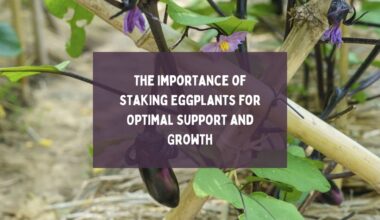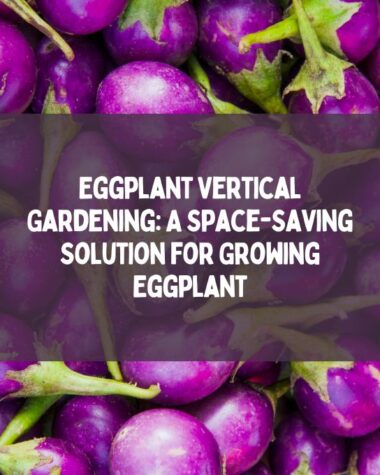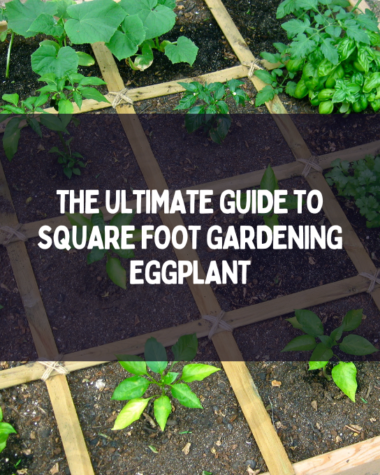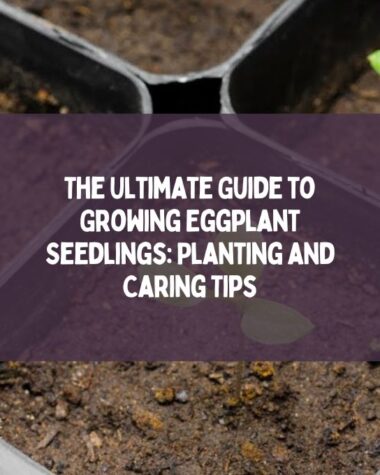Eggplants, also known as aubergines, are versatile and nutritious vegetables that can be enjoyed in a variety of dishes. To ensure optimal growth and productivity, it is essential to implement proper pruning techniques.
In this comprehensive guide, we will explore the art of eggplant pruning, step-by-step instructions, best practices, and the benefits it offers.
Whether you are an experienced gardener or a novice, this article will equip you with the knowledge and skills necessary to cultivate healthy eggplants and maximize your yield.
Eggplant Pruning: A Key to Success
Proper pruning is crucial for maintaining the overall health and productivity of eggplant plants. By removing unwanted growth and diseased or damaged parts and promoting better air circulation, pruning can significantly enhance the plant’s ability to produce quality fruit.
Additionally, pruning encourages the development of strong and sturdy branches, which can better support the weight of the eggplants.
Why Prune Eggplants?
Pruning eggplants serves multiple purposes, including:
- Improved Air Circulation: Pruning helps create space between branches, allowing air to circulate freely. This reduces the risk of fungal diseases, such as powdery mildew, and promotes a healthier growing environment.
- Enhanced Sunlight Exposure: Trimming excessive foliage allows sunlight to reach the inner parts of the plant, aiding in the ripening process and improving fruit quality.
- Controlled Growth: Pruning prevents eggplant plants from becoming overly bushy, which can hinder air movement and increase the likelihood of pests and diseases.
- Increased Yield: By directing the plant’s energy towards fruit production rather than foliage growth, pruning can result in a more abundant harvest.
Related Reading
- Secrets to Successful Eggplant Cultivation: What is the Secret for Growing Eggplant?
- Comprehensive Guide On Growing Eggplant In A Pot
- White Shades Of Eggplant: Exploring the Versatility of White Eggplant
- Top 5 Eggplant Growing Problems (and How to Fix Them)
- Common Reasons Why Your Eggplants Are Not Growing: Tips and Solutions
When to Prune Eggplants?
Timing is crucial when it comes to pruning eggplants. It is recommended to start pruning once the plant has established a solid root system and developed a few sets of true leaves. Typically, this occurs when the plant reaches a height of 12–18 inches and is approximately 6–8 weeks old.
Pruning in Early Stages
During the initial stages of growth, focus on removing the suckers or side shoots that emerge from the base of the plant. These suckers draw energy away from the main stem and can lead to a less productive plant. Pinching them off using your fingers or pruning shears promotes stronger, central growth.
Pruning Throughout the Growing Season
Regular maintenance pruning should be carried out throughout the growing season to ensure optimal health and productivity of the eggplant plants.
Here are the key steps to follow:
- Remove Diseased or Damaged Foliage: Inspect the plant regularly and remove any leaves or stems showing signs of disease, pest infestation, or physical damage. Prompt removal prevents the spread of infections and redirects the plant’s energy towards healthy growth.
- Trim Excessive Foliage: Eggplants tend to produce an abundance of foliage, which can overshadow the fruit and hinder proper sunlight penetration. Trim excess leaves and branches, focusing on areas that are densely populated. Aim to maintain a well-balanced canopy that allows light to reach all parts of the plant.
- Prune Lower Branches: As the plant grows, remove the lower branches that touch the ground. This prevents soil-borne diseases and pests from easily accessing the plant and minimizes the risk of fruit rot.
- Support the Main Stem: If the main stem starts to bend under the weight of developing fruit, provide support by tying it to a stake or trellis. This prevents breakage and ensures the plant remains upright.
- Remove Spent Foliage: As the growing season progresses, some leaves and branches may naturally decline. Remove these spent parts to maintain a tidy and productive plant.
Eggplant Pruning Techniques
Pruning techniques may vary depending on the desired growth habit and personal preferences. Two common methods used for eggplant pruning are single-stem pruning and multiple-stem pruning.
Single-Stem Pruning
Single-stem pruning, also known as central leader pruning, involves allowing only one main stem to grow while removing all side shoots. This method is suitable for indeterminate eggplant varieties that tend to produce vigorous growth.
To implement single-stem pruning:
- Select the Main Stem: Identify the strongest and most central stem as the main leader. Remove any competing stems emerging from the base.
- Remove Side Shoots: Regularly inspect the plant for suckers or side shoots that develop in the leaf axils. Pinch them off using your fingers or pruners to maintain a single-stem structure.
- Support the Main Stem: As the plant grows, it may require additional support to prevent it from bending or breaking. Use stakes or trellises to keep the main stem upright.
- Continue Maintenance Pruning: Throughout the growing season, monitor the plant and remove any diseased or damaged foliage, as well as excessive branches, to maintain a healthy and productive plant.
Multiple-Stem Pruning
Multiple-stem pruning, also known as open-center pruning, involves allowing several main stems to develop from the base. This method is suitable for determinate eggplant varieties that exhibit more compact growth.
To implement multiple-stem pruning:
- Select Multiple Main Stems: Choose 2-3 healthy and well-spaced stems as the main leaders. Remove any weaker or crowded stems.
- Trim Excessive Side Shoots: Regularly remove side shoots emerging from the main stems, especially those growing too close together. Maintain an open-center structure that allows light to penetrate.
- Provide Support if Needed: Similar to single-stem pruning, provide support to the main stems if they become heavy with fruit or start to bend.
- Regular Maintenance Pruning: Continually monitor the plant’s health and prune as necessary to remove diseased or damaged foliage and promote overall vigor.
Related Reading
- Exploring the Sweet Success Cucumber: A Guide to its Unique Flavor and Benefits
- The Vibrant Charm of Orange Pumpkins: Exploring Their Symbolism and Culinary Delights
- Can Rabbits Eat Zucchini? Why Or Why Not?
- When to Feed Tomato Plants: A Comprehensive Guide
- How to Get Started with Gardening?
- Can Dogs Eat Carrots? A Complete Guide to Feeding Carrots to Your Furry Friend
Conclusion
Pruning eggplants is an essential practice for maintaining healthy plants, maximizing yield, and improving fruit quality.
By removing excess foliage, promoting air circulation, and controlling growth, you can create an optimal environment for your eggplant plants to thrive. Whether you choose single-stem or multiple-stem pruning, regular maintenance and monitoring are key to success.
Remember to sanitize your pruning tools and compost the pruned material responsibly. By implementing the proper pruning techniques outlined in this guide, you can enjoy a bountiful harvest of delicious eggplants.







